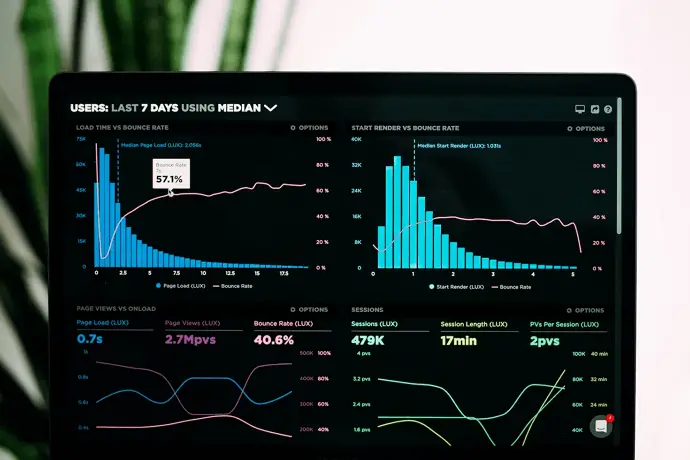Advertising is like the engine that propels your business forward, but figuring out how much to spend on it can feel like navigating a maze. In this easy-to-understand guide, we’ll break down the process of determining your advertising budget into simple steps.

Plus, we’ll sprinkle in some wisdom about branded content and the world of SMM panels, including SMM reseller panels, cheap SMM panels, and Instagram reseller panels. Let’s dive in!
The Basics: What’s an Advertising Budget?
Before we dive into the budgeting process, let’s get on the same page about what an advertising budget is. Think of it as your financial plan for promoting your business. It’s the money you set aside for all your advertising activities, like running ads on social media, launching marketing campaigns, and creating branded content.

Step 1: Define Your Goals
Imagine you’re planning a road trip. Before you hit the road, you need to know your destination. Similarly, in advertising, you need clear goals to guide your budget decisions. Here are some common advertising goals:
- Boosting Brand Awareness (Branded): This is your goal if you want more people to recognize your brand and what you offer. It’s like making sure everyone knows your name in the business world.
- Increasing Sales: For many businesses, the ultimate goal is to sell more products or services. This means you’re looking to turn your advertising into dollars.
- Launching Something New (Instagram Reseller Panel): When you’re introducing a fresh product, like an Instagram reseller panel, you might need to allocate more budget to make a big splash.
- Mastering Social Media (SMM Panel): If conquering social media is your focus, you’ll need a budget for an SMM panel (Social Media Marketing panel).
- Pinching Pennies (Cheap SMM Panel): Saving money while advertising effectively? That’s where a cheap SMM panel can come in handy.
By understanding your goals, you can tailor your budget to achieve them effectively.
Step 2: Check Your Financial Health
Alright, let’s get real about your money matters. It’s like giving your finances a check-up. Here’s what you need to know, plain and simple:
- Money In (Revenue): This is the cash that’s rolling into your business from selling your stuff. Imagine it as your paycheck if you were a business. The amount of money you can spend on advertising should be fair and square, based on how much you’re making.
- Money Out (Expenses): Think of this as the list of bills you need to pay every month. It includes things like rent for your space, salaries for your awesome team, the electricity bill that keeps your lights on, and all the other costs that come with running your show.
- Profit Margin: Now, this is where the magic happens. Take your revenue (money in) and subtract your expenses (money out). What’s left is your profit. It’s the cash that’s left in your pocket after you’ve covered all your business bills. This is the money you have to play with, and some of it can go into advertising.

- Emergency Fund: Just like you’d stash away some cash for a rainy day, your business should have a safety net too. It’s like having a spare change in your piggy bank for surprises or when things get slow.
- Existing Debt: If you’ve borrowed money for your business, whether through loans or credit cards, that’s debt. It’s like the money you owe your friend when they spotted you for lunch. You need to factor in how much you have to pay back regularly because it’ll affect how much you can comfortably spend on advertising.
So, think of your finances like a puzzle. You want to make sure all the pieces fit together without leaving you broke or in a financially tight spot. Once you’ve got a handle on your money, you’ll be ready to move on to the next steps in creating your advertising budget.
Step 3: Determine Your Maximum Budget
Now that you’ve got a handle on your financial situation, it’s time to decide how much money you can allocate to advertising. Here are two straightforward methods:
- Percentage of Revenue: This is a common approach. Many businesses allocate a certain percentage of their revenue to advertising. Typically, small businesses spend around 5-10% of their revenue on advertising. If you’re just starting or facing tight finances, you might need to adjust this percentage.
- Competitor Analysis: Take a look at what your competitors are doing. If they’re investing heavily in advertising, you might need to keep pace. On the other hand, if they’re not advertising much, you could make a bigger impact with a smaller budget spent wisely.
Step 4: Allocate Your Budget Wisely
You’ve determined your budget, but now comes the crucial part – allocating it effectively. Here’s how:
- Focus on Core Channels: Identify the advertising channels that are most effective for your business. This could be social media, Google Ads, email marketing, or even traditional methods like print ads. Concentrate your budget where you’ll get the most bang for your buck.
- Experiment and Learn: Don’t put all your eggs in one basket. Allocate a portion of your budget to try out new channels or strategies. It’s like testing different recipes until you find the one that’s a hit.
- Seasonal Adjustments: Depending on your business type, some seasons might be busier than others. If you’re a retailer, for instance, you’ll likely need more advertising during the holiday season. Be ready to adjust your budget accordingly.
Step 5: Monitor and Adapt
Setting your budget is just the beginning. You need to keep a close eye on your advertising efforts and how they’re impacting your business. Here’s how to do it:
- Use Analytics: Tools like Google Analytics, social media insights, and sales data can give you valuable information about the performance of your ads. It’s like having a dashboard that shows you how fast you’re driving.

- Be Ready to Adjust: If you see that a particular advertising channel or campaign isn’t delivering the results you want, be prepared to make changes. This might mean shifting funds from one channel to another, tweaking your ad copy, or refining your targeting.
Final Thoughts
Determining your advertising budget doesn’t have to be a daunting task. By setting clear goals, understanding your finances, and making strategic decisions, you can create a budget that works for your business. Remember, it’s not about how much you spend; it’s about how wisely you do it.
So, take a deep breath, grab a cup of coffee, and tackle your advertising budget with confidence. Whether you’re all about being branded, conquering social media with an SMM panel, hunting for a cheap SMM panel, or launching something new like an Instagram reseller panel, you’ve got the tools to make it happen. Cheers to successful advertising!

 Bitcoin
Bitcoin  Ethereum
Ethereum  Tether
Tether  XRP
XRP  Solana
Solana  USDC
USDC  Dogecoin
Dogecoin  Cardano
Cardano  TRON
TRON